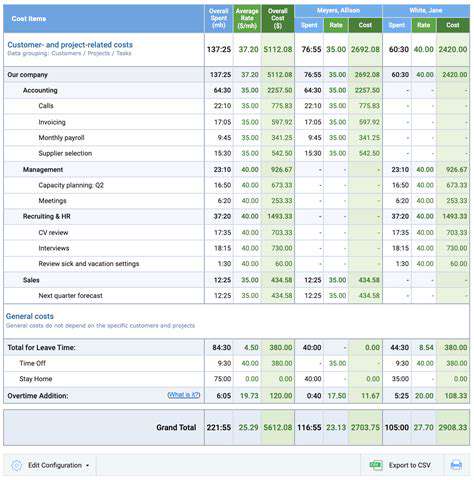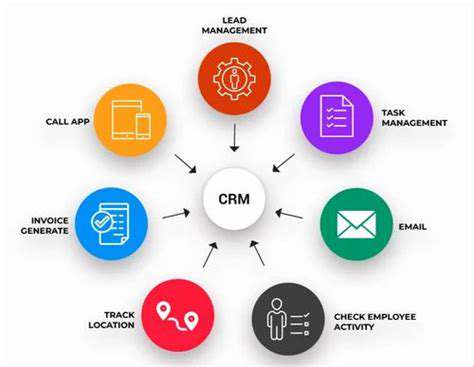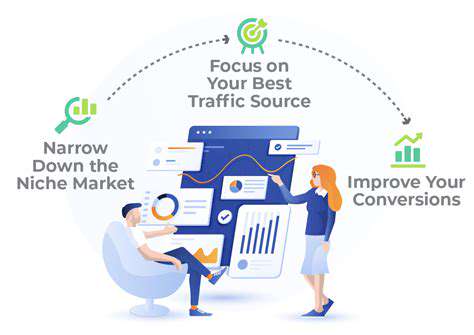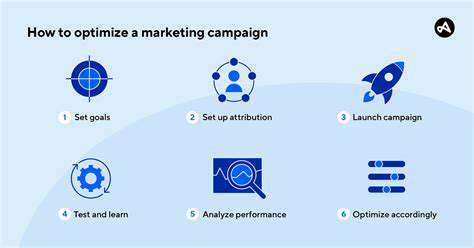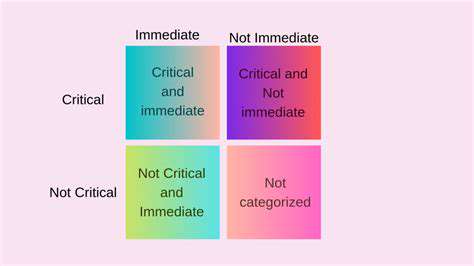Google Analytics Reports Every Marketer Should Know
Website Traffic Sources
Understanding where your website traffic originates is crucial for optimizing your marketing efforts. Analyzing data from Google Analytics reveals the channels driving visitors to your site, such as organic search, social media, paid advertising, referrals from other websites, and direct traffic. This breakdown helps you pinpoint which marketing strategies are most effective and where you might need to allocate more resources for better results. By identifying the top-performing sources, you can tailor your content and campaigns to resonate with those specific audiences.
Pageviews and Unique Visitors
Pageviews represent the total number of pages viewed on your website, providing a general sense of engagement. However, unique visitors offer a more refined metric, counting the distinct individuals who visited your site. Monitoring both metrics is essential for comprehending how many people are interacting with your content and the depth of their engagement. A high number of pageviews with a low number of unique visitors could indicate that users are revisiting the same pages, suggesting possible issues with the content's appeal or website navigation.
Bounce Rate and Dwell Time
The bounce rate reflects the percentage of visitors who leave your website after viewing only one page. A high bounce rate might suggest that the landing page isn't compelling enough to keep visitors engaged. Alternatively, it could point towards issues with site navigation or usability. Dwell time, on the other hand, measures the average time visitors spend on your website. A longer dwell time indicates that visitors are finding your content valuable and engaging, while a shorter dwell time might signal that the content isn't relevant or engaging enough.
Conversion Rates
Conversion rates represent the percentage of website visitors who complete a desired action, such as making a purchase, signing up for a newsletter, or filling out a contact form. Tracking conversion rates is vital for evaluating the effectiveness of your website in achieving your business objectives. Analyzing conversion rates across different channels and pages can pinpoint areas for optimization to enhance user experience and encourage more conversions.
Geographic Location of Visitors
Knowing where your website traffic originates from geographically allows you to tailor your marketing efforts to specific regions and cultures. Understanding the demographics of your visitors will enable you to target your messaging and products more effectively. For example, if a significant portion of your traffic comes from a particular region, you might consider localizing your content or offering localized support to better serve those users.
Traffic Trends Over Time
Analyzing website traffic trends over time reveals patterns and seasonal variations in user behavior. Observing these trends helps you understand the fluctuations in your website traffic and anticipate potential issues or opportunities. By analyzing data over time, you can identify periods of increased or decreased traffic and tailor your marketing strategies accordingly to capitalize on peaks in traffic or proactively address potential declines. Understanding these fluctuations allows for more informed decision-making.
Mobile vs. Desktop Traffic
Distinguishing between mobile and desktop traffic is essential for optimizing your website for different devices. This data helps you understand user behavior across various platforms, enabling you to tailor your website's design and content for optimal viewing and usability on both mobile and desktop devices. If a significant portion of your traffic comes from mobile devices, you need to ensure that your website is responsive and user-friendly on smaller screens. This helps you create a seamless experience for all users, regardless of the device they are using.
Diving Deeper into User Behavior: Session Duration and Engagement
Understanding Session Duration
Session duration, a crucial metric in Google Analytics, reveals the average time a user spends interacting with your website during a single session. A longer session duration often signifies greater user engagement and deeper exploration of your content. This metric is valuable in understanding user flow, identifying areas where users might be dropping off, and pinpointing content that resonates with them. Analyzing session duration alongside other engagement metrics, like bounce rate and pages per session, provides a more comprehensive picture of user behavior on your site.
Factors influencing session duration include website design, content quality, and user experience. A user-friendly interface, intuitive navigation, and compelling content are likely to keep users engaged for longer. Poorly structured pages, slow loading times, or complex navigation can quickly lead to shorter sessions. By tracking and analyzing this data, you can identify areas for improvement and optimize your website to enhance user experience and encourage deeper engagement.
Factors Affecting Session Duration
Several factors contribute to the length of a user's session on your website. Content quality plays a significant role, with high-quality, informative, and engaging content keeping users on your site longer. Website speed and performance are critical; slow loading times can drastically reduce session duration as users abandon the site. Navigation and ease of use are also important. A user-friendly interface that allows users to easily find what they need will encourage exploration and longer sessions.
Mobile-friendliness is another key factor. A responsive design that adapts seamlessly to various devices ensures a positive experience for all users, irrespective of the device they're using. Finally, the overall user experience (UX) plays a crucial role. A site that is visually appealing, easy to navigate, and provides a positive experience will naturally encourage longer sessions. Optimizing for these factors will have a noticeable impact on session duration and user engagement.
Engagement Metrics and Session Duration
Session duration is often considered alongside other engagement metrics such as bounce rate, pages per session, and average session duration. These metrics provide a holistic view of user behavior and help in identifying patterns and insights. A low bounce rate, coupled with a high number of pages per session and a longer average session duration, suggests high user engagement. Analyzing these metrics together helps understand which areas of the website are performing well and where improvements are needed.
Tracking these metrics over time allows you to identify trends and patterns in user behavior. This data is crucial in understanding how users interact with your site and what factors influence their engagement. By continuously monitoring these metrics and adapting your website accordingly, you can improve user experience and drive better results.
Analyzing Session Duration Data
Analyzing session duration data in Google Analytics involves looking at the overall average, identifying patterns in specific pages or sections of your website, and understanding how different user segments interact. Understanding the average session duration across different user groups helps tailor content and design to meet the unique needs of each segment. Monitoring session duration alongside other metrics like bounce rate and time on page allows you to gain a more comprehensive understanding of user behavior.
Optimizing for Longer Sessions
To optimize for longer sessions, consider improving website speed, enhancing user experience, and creating engaging content. A fast-loading website is crucial for retaining users. Intuitive navigation, clear calls to action, and a visually appealing design will encourage users to explore your site further. Creating high-quality content that caters to user needs and interests can significantly impact session duration. By focusing on these aspects, you can encourage a higher level of user engagement and satisfaction on your site.
Unveiling the Power of Conversion Tracking: Measuring Success
Understanding the Core Concept
Conversion, in its broadest sense, refers to the transformation of a prospect into a customer. This process involves guiding potential clients through various stages, from initial awareness to final purchase. Understanding the nuances of this process is crucial for any business seeking growth. A successful conversion strategy hinges on effective communication, compelling value propositions, and a user-friendly experience.
In the realm of marketing and sales, conversion is often measured by specific actions, such as completing a form, making a purchase, or subscribing to a newsletter. These metrics provide valuable insights into the effectiveness of marketing campaigns and the overall health of the sales funnel.
The Importance of Conversion Rate Optimization
Optimizing conversion rates is paramount for businesses looking to maximize their return on investment (ROI). By focusing on improving the conversion process, companies can achieve significant gains in revenue and profitability. Identifying and addressing pain points in the customer journey is key to improving conversion rates.
Factors Influencing Conversion Rates
Numerous factors influence conversion rates, ranging from website design and user experience to marketing messaging and sales strategies. A well-designed website with clear calls to action and intuitive navigation significantly improves the chances of conversion.
Furthermore, compelling marketing messages that resonate with the target audience are essential for driving conversions. Understanding the customer's needs and pain points is critical to crafting effective messaging.
Crafting Effective Value Propositions
A strong value proposition is the cornerstone of a successful conversion strategy. It clearly articulates the benefits a product or service offers to the customer and how it solves their problems. Highlighting unique selling points and emphasizing the value proposition are key steps for attracting and converting potential customers.
Analyzing and Tracking Conversions
Effective conversion strategies rely heavily on data analysis and tracking. By monitoring key metrics such as click-through rates, conversion rates, and bounce rates, businesses can gain valuable insights into customer behavior and identify areas for improvement. Detailed tracking allows for data-driven decisions that optimize the conversion process.
Implementing Strategies for Improvement
Once key conversion metrics are established, implementing strategies to improve those metrics is a critical step. This can involve A/B testing different elements of the website or marketing campaigns to see what resonates best with the target audience. Consistent monitoring and analysis are essential to maintain and improve conversion rates over time.
Exploring Audience Demographics and Interests: Understanding Your Users
Understanding Your User Base
A crucial aspect of effective Google Analytics implementation is grasping the demographics and interests of your website visitors. This knowledge allows for targeted strategies, improved content creation, and ultimately, a more engaging and profitable online presence. Understanding who your users are – their age, location, and interests – empowers you to tailor your website to better meet their needs and desires, increasing user satisfaction and fostering loyalty.
Gathering this data isn't just about knowing the basics. It's about diving deeper into the motivations behind user behavior. What are they looking for on your site? What are their pain points? Knowing this allows for more informed decisions about website design, content strategy, and marketing campaigns.
Geographic Location of Users
Google Analytics provides detailed geographic data, allowing you to pinpoint where your users are located worldwide. This information is invaluable for understanding your target market's reach and identifying potential areas for expansion. Knowing the dominant geographic regions of your audience enables focused marketing campaigns and the tailoring of content to resonate with specific cultural nuances and preferences. Are your users concentrated in specific cities or countries? This insight is critical for effective marketing strategies.
Age and Gender Demographics
Understanding the age and gender distribution of your users provides valuable insights into their needs and preferences. This data can inform content creation, product development, and marketing campaign strategies to better resonate with specific demographics. For example, if a significant portion of your users are in a younger demographic, your content strategy could be adjusted to reflect their interests and preferences.
By analyzing age and gender data, you can tailor your website's design, messaging, and offerings to better meet the needs and desires of your specific target audience, ultimately leading to improved user experience and engagement.
Interests and Hobbies
Google Analytics' interest categories provide a powerful tool for understanding the hobbies, interests, and passions of your website visitors. This knowledge is critical for tailoring content, products, and services that directly address their needs and desires. By identifying common interests, you can create more targeted content that resonates with your audience and encourages engagement.
Identifying shared interests can also help you discover new opportunities to connect with your audience on a deeper level. This data can be leveraged to develop personalized recommendations, improve user experience, and ultimately increase user engagement.
Technology and Devices Used
Knowing which devices (desktops, tablets, mobile phones) and browsers visitors use to access your website is crucial for optimizing the user experience. Mobile-first design, for example, is essential to ensure your website is accessible and usable on a variety of devices. Analysis of this data helps you prioritize development efforts by indicating where your website needs improvement based on the specific technologies and devices your audience is using.
Behavioral Insights from Demographics
Delving into behavioral patterns, such as how long visitors spend on specific pages or which content they interact with most, reveals valuable insights about user preferences and needs. Combining this behavioral data with demographic information offers a comprehensive understanding of how different user groups interact with your website. By studying this combined data, you can identify and address potential user pain points and enhance user engagement.
Engagement and Conversion Rates by Demographics
Understanding how different demographics engage with your website and convert into customers is essential for optimizing your marketing and sales strategies. Analyzing conversion rates for different user groups reveals which strategies resonate best with specific segments. This allows you to tailor your marketing efforts to maximize engagement and conversions within each demographic group, ultimately boosting your bottom line.
By tracking and analyzing these key metrics, you can gain a deeper understanding of your user base and effectively tailor your website and marketing strategies to maximize user engagement and conversion rates across different demographic groups.
Read more about Google Analytics Reports Every Marketer Should Know
Hot Recommendations
- Personalizing Email Content with User Behavior
- Geofencing for Event Attendance Tracking
- Reputation Management on Social Media
- UGC Beyond Photos: Videos, Testimonials, and More
- The Future of Data Privacy Regulations
- Accelerated Mobile Pages (AMP) Benefits and Implementation
- The Future of CRM: AI and Voice Integration
- Google Ads Smart Bidding Strategies: Maximize Value
- Common A/B Testing Pitfalls to Avoid
- Local SEO Strategies for Small Businesses


